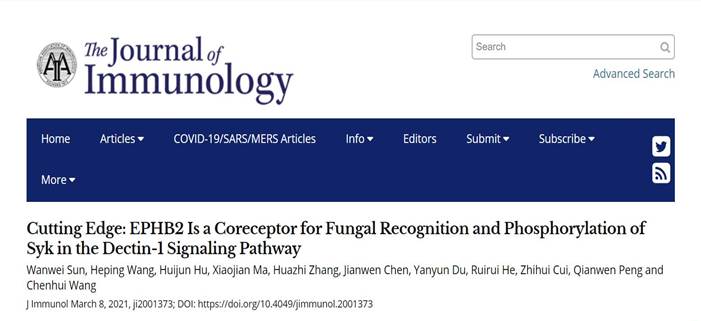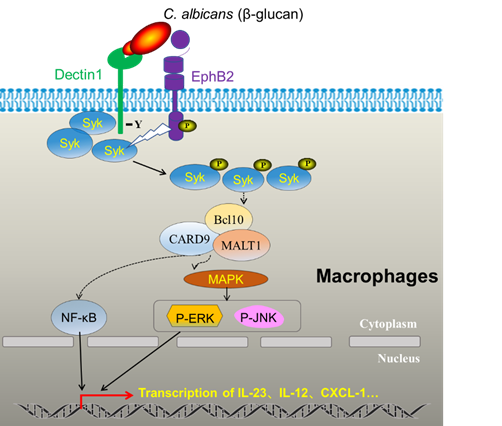(Correspondent sun wanwei) on March 4, Professor Wang Chenhui's team from Huazhong University of science and technology published a research paper entitled "EPHB2 is a coreceptor for functional recognition and phosphorylation of SYK in the Dectin-1 signaling pathway" in the cutting edge section of the Journal of Immunology.

Link:https://www.jimmunol.org/content/early/2021/03/05/jimmunol.2001373
In recent years, the rate fungal infection is on the rise all over the world, and it has become one of the important diseases endangering human health. At present, the impact of fungal infection on human health is spiraling. The global mortality rate of fungal infection exceeds that of malaria or breast cancer, and is equivalent to that caused by tuberculosis and HIV infection. However, there are relatively few antifungal drugs, which brings great challenges to the control of fungal infection. Moreover, the study of antifungal signaling pathway is still insufficient, which needs to be further explored to provide targets and clues for the research and development of antifungal drugs. Previously, we found that TAGAP is an important adaptor protein in the antifungal signaling pathway, and participates in the regulation of Th17 cell differentiation(Nat Commun. 2020 Apr 20;11(1):1913)。
Our follow-up study found that the TAGAP-interacting protein EPHB2 is a new co-receptor for fungi recognition, and it is critical for the activation of Syk in the antifungal signaling pathway. Through the mechanistic study, we found that EPHB2 directly recognized the fungal cell wall component β-glucan, and cooperated with Dectin-1 to activate downstream signal transduction. In addition, we found that EphB2 is essential for the phosphorylation and activation of downstream kinase Syk. In the EPHB2 knockout cells, SYK phosphorylation was almost completely abolished. Finally, we verified the critical role of EPHB2 in the antifungal immunity by using knockout mice model. There are two main innovations in this study: 1) identification of a new anti-fungal co-receptor on mammalian cell surface; 2) solving a long-standing problem in this field, that is, how Syk is activated after fungal stimulation.
Wanwei Sun, a postdoctor in school of lifes cience, Huazhong University of science and technology, and Wang Heping, a doctoral student, are the co-first authors of the paper. Pro. Chenhui Wang is the corresponding author. This research is supported by the National Natural Science Foundation of China and the National Postdoctoral foundation of China.
